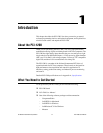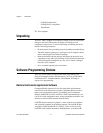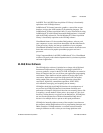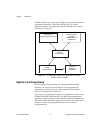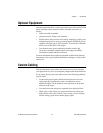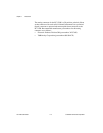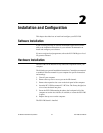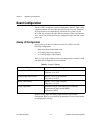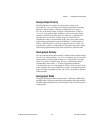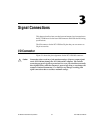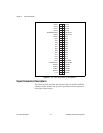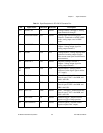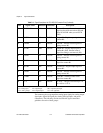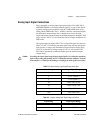Chapter 2 Installation and Configuration
© National Instruments Corporation 2-3 PCI-1200 User Manual
Analog Output Polarity
The PCI-1200 has two channels of analog output voltage at the
I/O connector. You can configure each analog output channel for either
unipolar or bipolar output. A unipolar configuration has a range of
0 to 10 V at the analog output. A bipolar configuration has a range of
–5 to +5 V at the analog output. In addition, you can select the coding
scheme for each D/A converter (DAC) as either two’s complement or
straight binary. If you select a bipolar range for a DAC, the two’s
complement coding is recommended. In this mode, data values written
to the analog output channel range from F800 hex (–2,048 decimal) to
7FF hex (2,047 decimal). If you select a unipolar range for a DAC, the
straight binary coding is recommended. In this mode, data values written
to the analog output channel range from 0 to FFF hex (4,095 decimal).
Analog Input Polarity
You can select the analog input on the PCI-1200 for either a unipolar range
(0 to 10 V) or a bipolar range (–5 to +5 V). In addition, you can select the
coding scheme for analog input as either two’s complement or straight
binary. If you select a bipolar range, the two’s complement coding is
recommended. In this mode, –5 V input corresponds to F800 hex
(–2,048 decimal) and +5 V corresponds to 7FF hex (2,047 decimal). If you
select a unipolar mode, the straight binary coding is recommended. In this
mode, 0 V input corresponds to 0 hex, and +10 V corresponds to FFF hex
(4,095 decimal).
Analog Input Mode
The PCI-1200 has three different input modes—RSE input, NRSE input,
and DIFF input. The single-ended input configurations use eight channels.
The DIFF input configuration uses four channels. Table 2-2 describes these
configurations.



